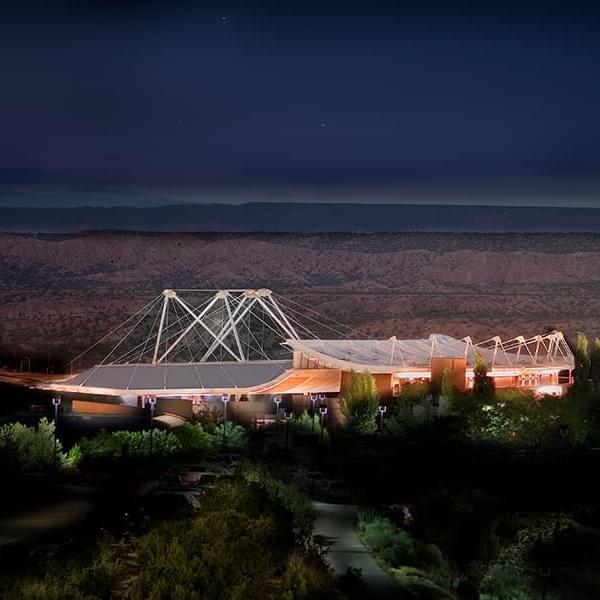
Salome 1979
Witness the explosion of a willful princess…
… whose awakening sexuality erupts into passionate loathing and destroys the very object of her desire. One of the Bible’s most powerful episodes depicting the rise and fall of evil is transformed by Richard Strauss and Oscar Wilde into an operatic tour-de-force that will haunt you with its shocking poetic and musical intensity.
Synopsis
Music drama in one act
The scene is set on a terrace above the banquet hall in the palace of Herod, Tetrarch of Judea.
Palace soldiers are on guard as the Tetrarch entertains within the hall. Narraboth, Captain of the Guard, speaks with the Page of his deep infatuation with the beautiful Princess Salome. The Page, hurt by Narraboth’s feelings, warns him of the dangers and futility of his love.
Salome, bored with the excesses of the banquet and the persistent attentions of her stepfather, appears on the terrace, and is intrigued by the strange voice coming from the cistern. The voice is that of Jokanaan, a prophet who has been preaching against Herodias as a murderous adulteress. Curious to see him, Salome asks that he be brought up from the cistern. Narraboth, unable to resist her persuasion, does as she asks, against Herod’s orders.
Jokanaan comes into the open continuing his denunciation of the Tetrarch’s wife and the court. Salome is immediately and completely overcome with desire for him, and Narraboth, realizing that he will never be regarded as more than a servant, kills himself unnoticed. When Jokanaan discovers Salome to be the daughter of Herodias, he curses her also and returns to the cistern leaving Salome pouting as a frustrated child.
Herod, Herodias, and their company enter the terrace. The dissolute Herod is full of personal and political fears, and is torn between his desire for Salome and his constant reading of ill omens and signs. He again turns his attention to Salome who, still intent on her encounter with Jokanaan, ignores him.
An argument ensues between the Tetrarch and his wife, who is jealous and derisive of his obvious attraction to her daughter. The disagreement is climaxed with Jokanaan’s voice again rising in denunciation of Herodias, who berates Herod for leaving the prophet unpunished.
The Jews and Nazarenes in the company become involved in a religious debate, and Salome, to her mother’s anger, gives in to Herod’s offer of any reward if she will dance for him.
Salome performs her sensual dance, ostensibly for Herod, with all her attention on the cistern. As her reward she demands the head of Jokanaan, which Herod finally allows her after frantic attempts to reach an alternative.
On receiving the head, Salome is transported into a sexual frenzy, speaking with Jokanaan as though he were alive, and finally fulfilling her frustrated lust by kissing the mouth she had been denied. Herod, horrified, orders her to be killed by the soldiers.
Artists

Josephine Barstow
Soprano
Salome

Arthur Thompson
Bass-baritone
Jokanaan

Ragnar Ulfung
Tenor
Herod

Jean Kraft
Mezzo-soprano
Herodias

Leo Goeke
Tenor
Narraboth

Claudia Catania
Mezzo-soprano
Page

Douglas Perry
Tenor
First Jew

David Adams
Tenor
Second Jew

Michael Austin
Tenor
Third Jew

Bruce Brys
Tenor
Fourth Jew

Carl Glaum
Bass
Fifth Jew

David Tigner
Baritone
Cappadocian

Laurence Albert
Bass
First Soldier

Terry Cook
Bass
Second Soldier

Beverly Hoch
Soprano
Slave

Michael van Engen
Bass
First Nazarene

Richard Harrell
Baritone
Second Nazarene

Lovell Horton
Actor
Executioner

Rebecca Barber
Mezzo-soprano
Handmaiden

Ellen Stettner
Soprano
Handmaiden

John Crosby
Conductor

Bliss Hebert
Director

Allen Charles Klein
Scenic Designer

Craig Miller
Lighting Designer

Pauline Grant
Choreographer

George Manahan
Conductor
